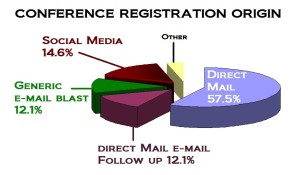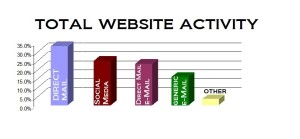 2018 was somewhat of a stormy year for social media in general.
2018 was somewhat of a stormy year for social media in general.
In January Facebook users complained that posts from businesses, brands and media were crowding out personal moments on their Newsfeed. Adam Mosseri, Head of News Feed, reported that FB would change their algorithm and would prioritize posts from friends and family over paid advertisers.
Then, the Cambridge Analytics (CA) Scandal came to light in March. CA was a British political consulting firm that combined data mining, data brokerage, and data analysis with strategic
communications during the US Presidential elections.
CA used information from Facebook and others to build psychological profiles of American voters by using an app that appeared to be a personality test. The app collected data on tens of millions of people and their FB friends, even those who didn’t download the app themselves.
Facebook share prices dropped more than $100 billion in days and politicians from the US & the UK demanded answers. The scandal eventually led FB President Mark Zuckerberg to testify in front of Congress.
The scandal incited public discussion on ethical standards for social media companies, political consulting organizations, and the war on false news heated to new levels.
May of 2018 brought the launch of the GDPR- General Data Protection Regulation. This
European Union law gives individuals more control over how and what data is collected by third parties and forces companies that collect data to be more transparent. That includes expedited notification of breaches. Though not in effect state-side (yet), the law and penalties apply to companies that collect data from EU residents, even if the company collecting isn’t part of the EU. Many expect similar legislation to follow here in the US.
Lastly, FB removed their Partner Categories in August. Partner categories were demographics available when creating audiences for paid FB & Instagram ads. These demographics derived from third party giants such as Axciom, Epsilon, Experian, Oracle Data Cloud, and Quantium. They provided game-changing personal information such as household income, parents with children (you pick the age), or what kind of car an audience drives.
Removal of these demographics left many marketers wondering what kind of returns to
expect in the future.
All was not blustery for digital platforms in 2018. Communicating through video apps and stories became front runners and are defining new ways marketers need to spend their advertising dollars.
In June, Instagram launched IGTV. Unlike Instagram, it allows users to upload vertical videos up to 10 minutes in length. Up to 60 minutes if you are verified or “popular”.
China based TikTok became the most downloaded app in the US. This app is for creating and sharing 15 second videos. (See our blog, ‘Six Wildly Popular Social Sites That You (probably) Never Hear Of“).
One thing is for certain. Social Media marketing landscapes will continue to change at lightning speed and we’ll do our best to keep you abreast of the latest trends.




